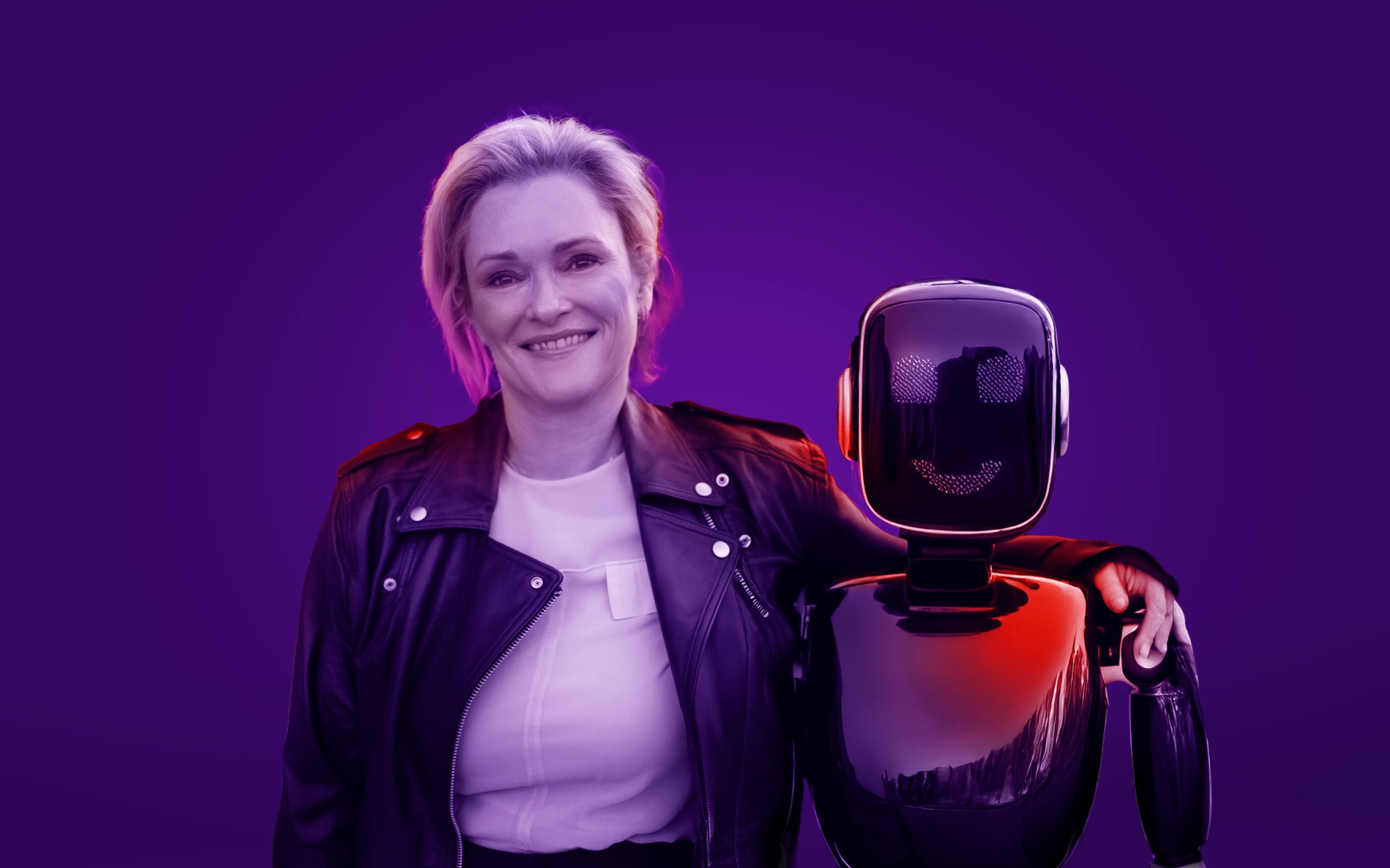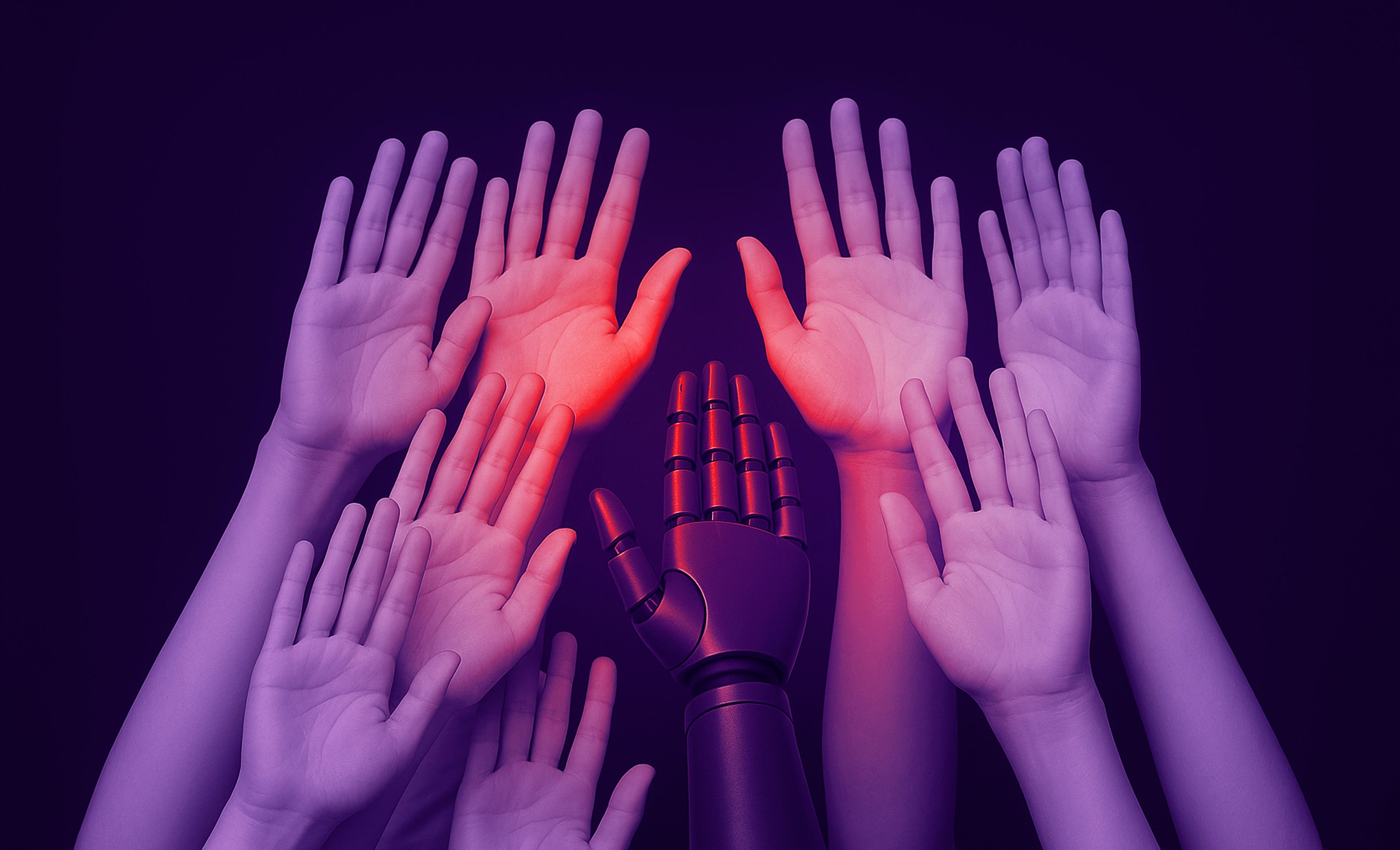Introduction
If your current strategy process feels too slow, too reactive, or too disconnected from emerging customer needs, you’re not alone. The playbook is changing fast and those who can tap into both AI and human instinct will lead it.
A strong vision comes from drawing out, gathering, and synthesizing signals with instinct, not just static data from the past. It blends what’s emerging with what’s intuitively understood and that synthesis remains a deeply human act. Especially in strategy development, vision is what enables forward-thinking strategy. Insight alone isn’t enough. It’s the combination of context, audience understanding, intuition and vision that brings depth and direction to strategic thinking.
That’s where Human-AI collaboration steps into powerful territory.
As someone who has spent countless hours question-storming with teams and decoding customer signals, I’ve never experienced a moment of change as potent as what we’re seeing now. The way we generate insights, design strategy, and test direction is being transformed. And it's only accelerating.
To lead in this shift, we need to rethink how strategy is created. It must evolve from static to dynamic cycles. Research and audience insights can’t be treated as a project artifact, it must become a continuous learning system. That’s where synthetic audiences come in.
From Real Research to Synthetic Vision: How to Build Intelligent Audiences with AI

The power of synthetic audiences is that they allow marketers to test the future on an ongoing and unlimited scale. But to do that well, I strongly believe you must start with rich, real-world insight.
Based on patterns we've seen across emerging consumer tech clients, imagine a fitness brand developing a new smart wearable. Their goal? To understand how different segments would respond to positioning focused on "peak performance," "style and self-expression," or "habit-building support."
The process begins with grounding in qualitative research- real life obeservation, interviews, reviews, social media discussions. These reveal what real people care about, in their own words or how they behave and what they don't even tell you. This is where the human factor is irreplaceable in order to be spotting emotional cues, contradictions, or unexpected passions in unstructured data. As this is something even the best NLP model might miss. AI can not feel, can not relate, can not emphasize. A stray comment like "I just want to look good at the gym without overthinking the tech" might spark an entirely new segment.
From there, quantitative signals like CRM data, web analytics, purchase behavior can provide structure. Using clustering models, segments begin to emerge. NLP tools help turn raw text into usable themes: motivations, objections, emotional drivers.
When you fuse these inputs, you don’t just get personas. You get data-rich, behaviorally simulated synthetic audiences. Models of real market segments who act like live consumers that can be enriched with traits like platform preference, content responsiveness, pricing sensitivity.
From this foundation, the fitness brand can now:
- Simulate how “Style-first Users” react to fashion-forward branding.
- Test if “Performance Junkies” prefer metrics-based ad copy.
- Evaluate whether gamified reward systems appeal to “Budget Beginners.”
And this goes beyond campaign testing. You can begin shaping future offerings. Want to know if a subscription model could work in 2026? Simulate reactions. Curious if a mental-fitness feature would resonate in five years? Model early adopters now.
This synthetic foresight capability becomes an innovation lab:
- Spot white space opportunities based on unmet needs.
- Pressure-test different business models with modeled buyer reactions.
- Map where trends like AI, bio-tracking, or sustainability will create new expectations.
Human Insight Is the Catalyst

AI can model, simulate, and support predictions. But the spark, the decision to zoom in on a peculiar phrase, to challenge the obvious cluster, to imagine a segment that doesn’t exist yet - all that still relies on human creativity and strategic judgment.
In synthesis, human marketers are not just editors of AI output. They are curators of possibility. They elevate signals into strategy, combining patterns with provocation.
In the fitness brand case, what changed the strategy wasn’t AI alone. It was the moment someone noticed that style-focused users were using language like "self-expression" and even "gym identity as a form of self-therapy," which led the team to test a completely new value proposition, one that performed better than any they’d previously considered.
Living, Dynamic Audiences: A New Strategic Asset

Once you build synthetic audiences, the work isn’t done. Like customers, they evolve.
A living synthetic audience system pulls in fresh data (CRM updates, social listening, survey insights). Behavioral probabilities are updated. Segments are re-clustered. Emotional drivers shift as culture moves. This isn't a set-it-and-forget-it dashboard but quickly becomes your human centred, AI augmented dynamic foresight engine.
Organizing these audiences as digital assets (in tools like Airtable, Notion, or custom LLM pipelines) allows teams to simulate everything from product-market fit to brand positioning, before spending millions on real-world rollout.
And when shared across product, marketing, sales and strategy teams, they become a unifying narrative: "Explore who our customers are becoming. Here’s how we must evolve with them."
Toward Continuous Strategic Imagination
We no longer live in an era where we can afford one annual strategy review. AI-augmented research lets us test and iterate strategic direction with speed, scale, and nuance. But strategy without vision is still shallow. And vision without human synthesis is still blind. Synthetic audiences let us prototype the future, but it’s human insight that makes that future worth building. So let’s move beyond decks and data. Let’s build strategies that live. Let’s create visions that evolve.
How are you bringing Human-AI collaboration into your research, innovation, or strategy work? Let’s connect, share, and shape what’s next.






